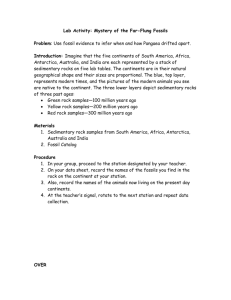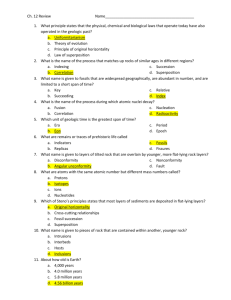Paleontology.vocabulary
advertisement
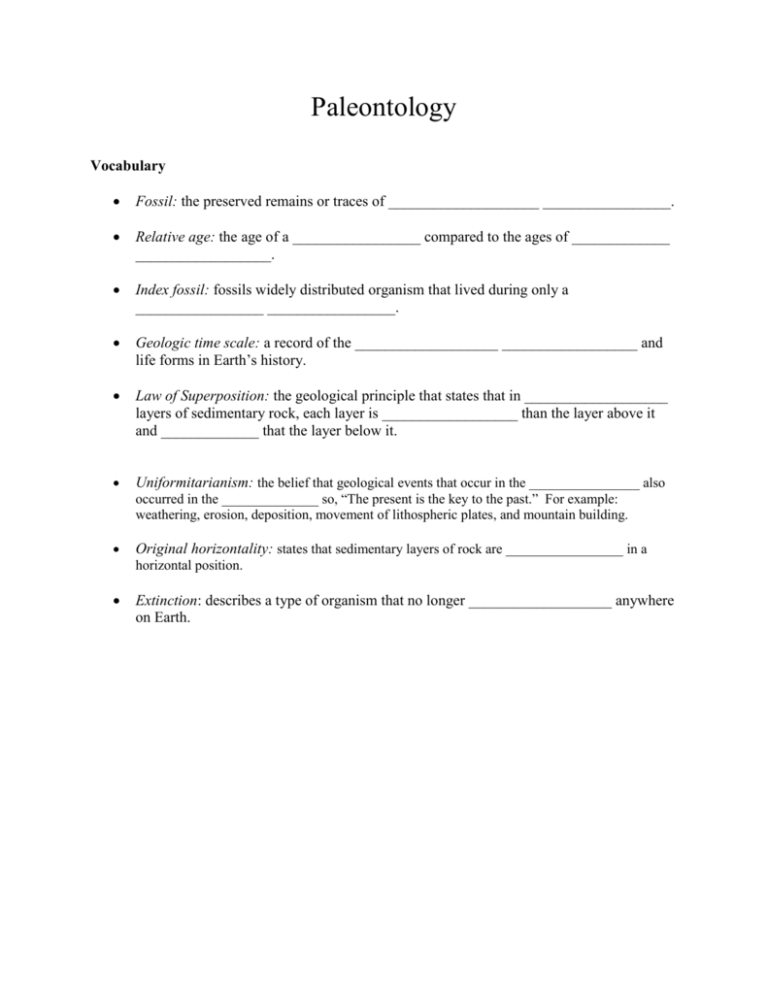
Paleontology Vocabulary Fossil: the preserved remains or traces of ____________________ _________________. Relative age: the age of a _________________ compared to the ages of _____________ __________________. Index fossil: fossils widely distributed organism that lived during only a _________________ _________________. Geologic time scale: a record of the ___________________ __________________ and life forms in Earth’s history. Law of Superposition: the geological principle that states that in ___________________ layers of sedimentary rock, each layer is __________________ than the layer above it and _____________ that the layer below it. Uniformitarianism: the belief that geological events that occur in the ________________ also occurred in the ______________ so, “The present is the key to the past.” For example: weathering, erosion, deposition, movement of lithospheric plates, and mountain building. Original horizontality: states that sedimentary layers of rock are _________________ in a horizontal position. Extinction: describes a type of organism that no longer ___________________ anywhere on Earth. Essential Questions and Answers: What is the principle of uniformitarianism and how does it relate to geology? The principle of uniformitarianism is the belief that _________________ _________________ that occur in the present also occurred in the past so, “The present is the key to the past.” For example: weathering, erosion, deposition, movement of lithospheric plates, and mountain building. What is a fossil? A fossil is the preserved ________________ or traces of living things. Explain original horizontality. The principle of original horizontality states that sedimentary layers of rock are ________________ in a horizontal position. How does the Law of Superposition determine the relative age of sedimentary rock? Relative age is the age of rock compared to the ages of other rock. The Law of Superposition states that in a horizontal layer of rock, the rock layer on the top is the _______________________. What are some examples of fossils showing evidence of the changing of earth's surface? An example of a fossil that shows ________________ of the changing of Earth’s surface, is finding a marine organism in an area of land, away from a water source (ocean, etc.). For example, fish skeletons found on mountain tops. If you found a fossilized shell on a mountaintop, what could you infer about how Earth’s surface and climate have changed since the shell was formed? We could infer that there was a sea bed or ocean at that place in the ________________. We could also infer that the mountain was uplifted from a sea bed over time. What are some examples of fossils showing evidence of the changing of earth's climate? Current research shows evidence of fossils showing the changing of earth’s ____________________.
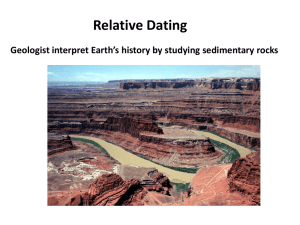

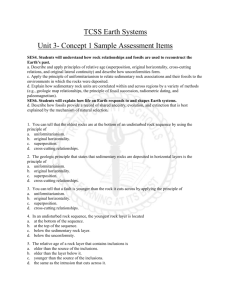

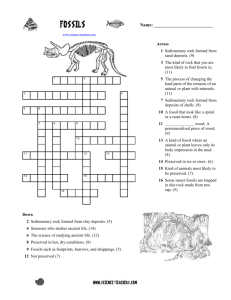

![F3-4 Study Guide for QUIZ [1/28/2016]](http://s3.studylib.net/store/data/006814899_1-56a576b1a51c0f876f28a8da0f15de89-300x300.png)

